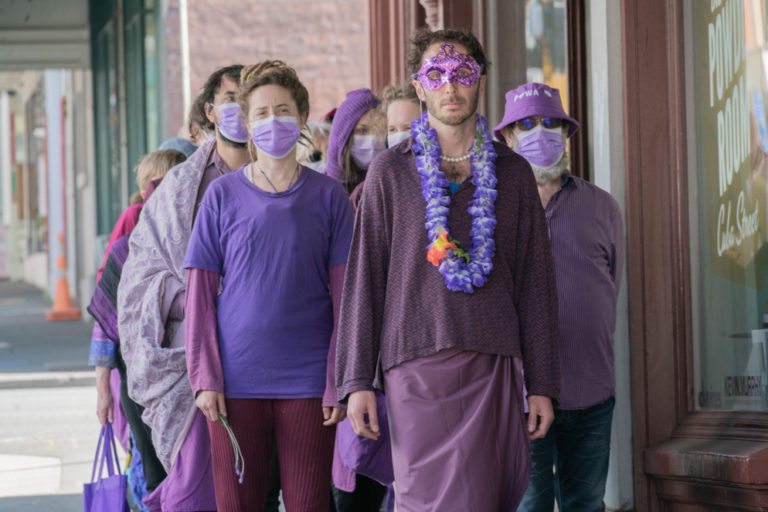
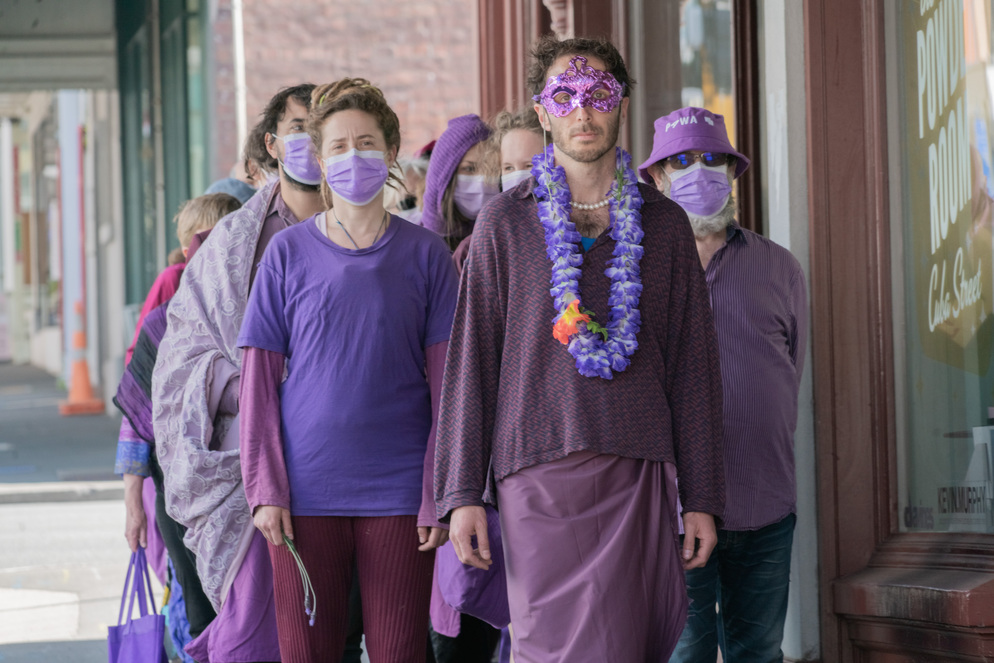

Public performance allows artists, participants and observers to engage with, critique, and disrupt social norms. Public space, or “the commons,” is a site of interaction that is familiar, as well as spontaneous and confronting. It exists outside of our immediate control, as opposed to private space (the occupation of space that has been purchased to ensure exclusive use and control), despite our bodies and behaviours exerting influence over it. There are two types of belief about the individual: that the discrete self is the same no matter what environment it exists within, or the idea that where we contextually situate ourselves affects us as much as our internal character does. In the latter, our individualism and our environment are in a symbiotic relationship.
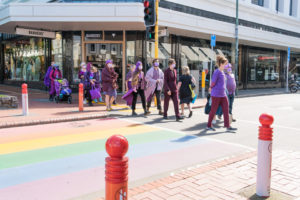
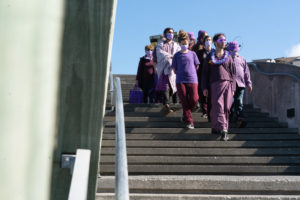
In the Netherlands, a central cultural concept is“doe normaal, (be normal)” which is about managing oneself appropriately in public life, about not stepping outside of what has been collectively sanctioned. It is about both belonging and policing; the idea that to be a part of the group you must adhere to a set of spoken and unspoken guidelines, and that if a person deliberately disobeys, they invite censure or commentary. Waiporoporo | We’re the purple by Sonja van Kerkhoff (The Purple Walk) played with the public’s sense of normality - of what is both expected and accepted. Reactions from the public ranged from avoidance, anger, bemusement, curiosity, and tolerance. The participants were comfortable moving through urban space in a slow, organised way because they had “safety in numbers,” and similarly, people felt comfortable staring, shouting, asking questions, or taking videos because the purple group existed outside of the day-to-day, and therefore, was less vulnerable (or likely to retaliate) than a single individual. The concept of The Purple Walk was that all participants were asked to move in a rhythmic, controlled way down Cuba Street to Wellington Harbour dressed in the colour purple. During the performance, there was both a sense of loss and belonging - the loss of singular identity in order to become a part of the group, but also loyalty and affinity with the many individuals involved. In a sense, the public reactions were just as much about their own personal exclusion as it was about our perceived abnormality as willfully disregarding or agitating social mores.
During the performance, the group was directed by the artist to be purple, to feel purple. The process of engaging with a non-tangible thing, a colour specifically, again brought about a feeling of compartmentalising identity in order to bring forth behaviours and sensations that are not necessarily accessible in everyday life. The concept of “liminal space,” from the Latin word limen “threshold”, is a space that one exists between states, a waiting space, or a space that shakes us out of our habitual lives. In liminal space, which can be a ritualised space (a space of intention), participants are asked to surrender in order to change. The Purple Walk embodied liminal space, a space where the participants were asked to set aside their subjective and rational relations with the commons in order to create a work that both challenged them as individuals, and challenged the environment that they overlay their work onto.
The theme of Performance Art Week Aotearoa “Public vs. Private” was designed to engage artists and their audience with the idea that how we conduct ourselves in spaces we think of as being subject to our will and spaces we know to be outside of it. The Purple Walk facilitated critical engagement from both participants and observers, and set them up with the task of thinking about ideas of acceptability, normality, and properness. As a participant I felt frustrated, liberated, confused and held in equal measure, and for outsiders, the performance was equally as complex. The public’s need to record and share our work was interesting, as if proximity to something “out of the ordinary” allowed observers to absorb that subversion as part of their own identity. It became something they saw, and therefore, something they did. This reminds me of our current political zeitgeist whereby it is enough to state that you think or believe something, even if the way you conduct your life, the “verb,” is in complete juxtaposition.
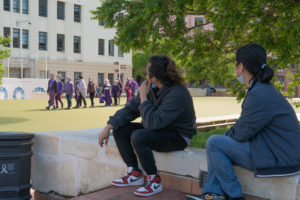
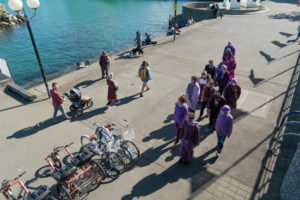
During The Purple Walk, I felt like we had morphed into a momentary distraction for people’s everyday life. I considered the idea of people documenting us as “good content” that was less about what we were doing, and more about how people might eventually perceive the person who recorded it in the first place. This got me thinking: if we have constructed social relations whereby the absurd brings about such a reaction, where have we hidden the bodies and behaviours that disturb comfortability and conformity? Reflecting on doe normaal, I think the way we construct our sociality often leaves us hungry for creativity and strangeness, but for most of us, it is about observing, not participating or creating. People who operate on the fringes of acceptability fascinate us, and equally make us uncomfortable, at the same time that spaces and people that have been marginalised by society are given a certain “authenticity” that draws people in (eg: the processes of gentrification) without the subsequent desire to facilitate, support, or partake. Performance art, and especially public performance art, pushes us to critically reflect on the norms we take for granted while allowing us the opportunity to participate in the construction of common space, to remake the world.
Written by Frances Pavletich
The Purple Walk